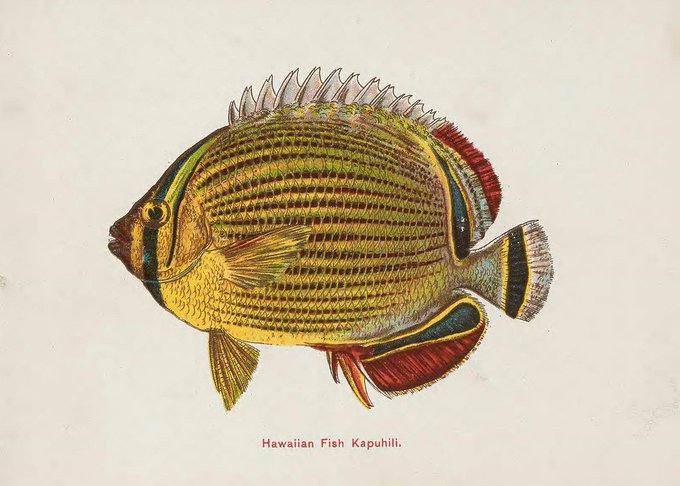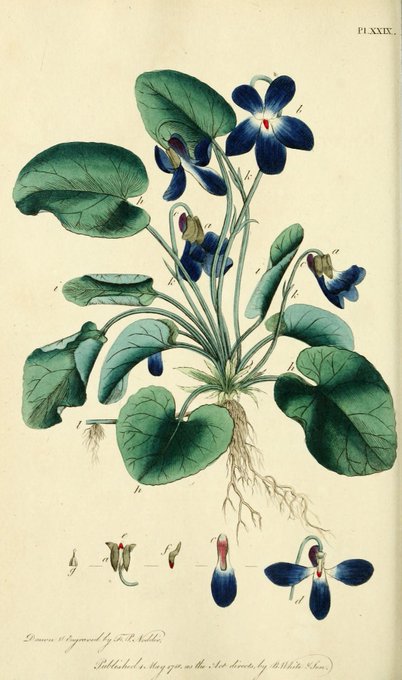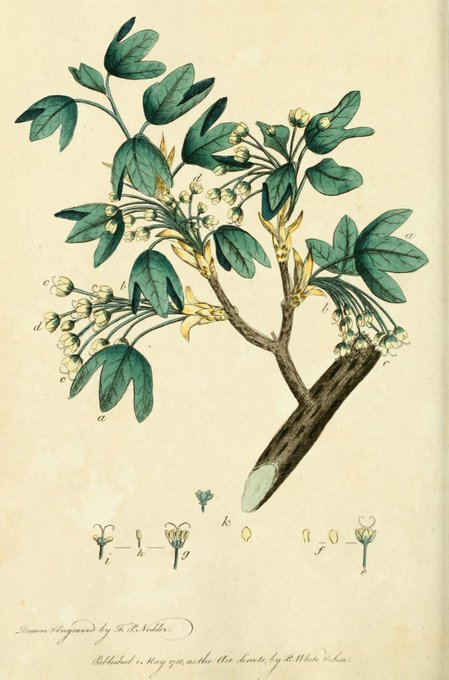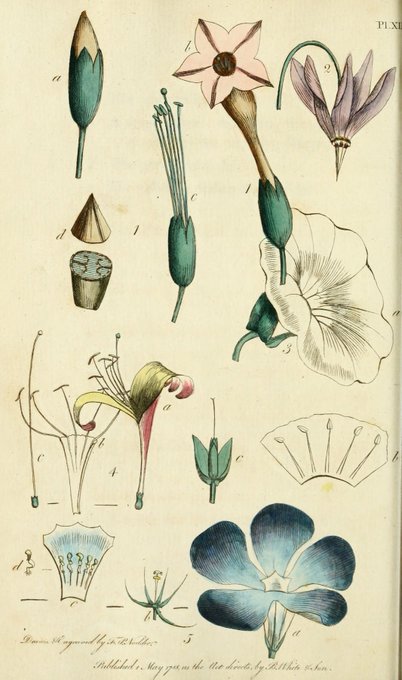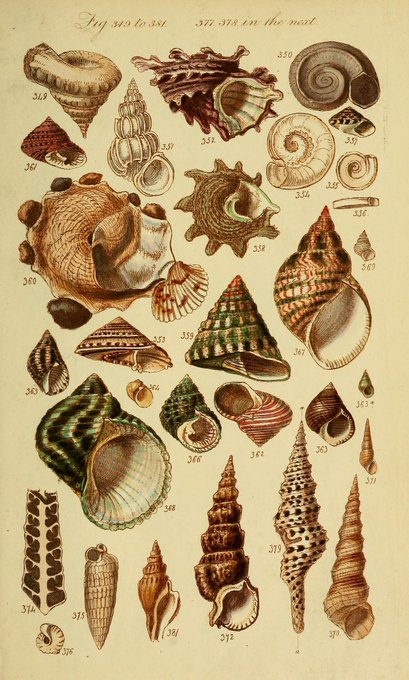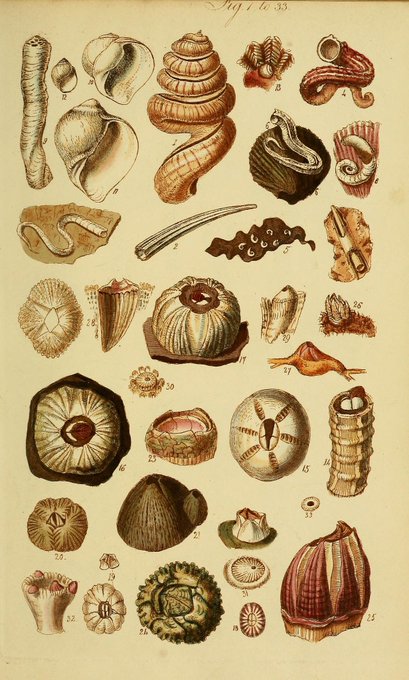BHLibのTwitterイラスト検索結果。 357 件中 6ページ目
The greater dwarf lemur (Cheirogaleus major) is nocturnal and lives in forests and dry scrub areas in Madagascar. #SciArt by P. Charles Berjeau for "The Proceedings of the Zoological Society of London" (1872), in #BHLib via @NHM_Library ➡️ https://t.co/jr0ECWwnB7 #MammalMonday
New to the #BHLib Flickr and perfect for #FishyFriday — "Hawaiian Fishes", featuring 12 beautiful chromolithographs of tropical sea fish found near the Hawaiian islands. Digitized by @SILibraries. Uploaded to Flickr by @NYBG. Explore it today ➡️ https://t.co/AxxmiRMI29 🐠🐡
The #SciArt for "The Indigenous Grasses of New Zealand" (1878-80) was produced via nature printing. The plant specimens were lightly inked and pressed onto the prepared surface of lithographic stones. Explore the work in #BHLib via @Mann_Library ➡️ https://t.co/C1a2zVPuBp
The #SciArt (by Frederick Polydore Nodder) in Thomas Martyn's "Thirty-eight plates, with explanations" (1799) was intended to help illustrate the structure of plants and their place in the Linnaean system. View the work in #BHLib via @Fisher_Library ➡️ https://t.co/06fSBcPlXV
Celebrate #FungiFriday with James Bolton's six-volume manuscript featuring 233 unpublished watercolor drawings of #fungi and descriptions of where each was found growing around Halifax, England. Freely available in #BHLib via @USDA_ARS ➡️ https://t.co/xw4jloB4Ym 🍄
#WorldWatercolorMonth + #BotanicMonday: Watercolors by Harriet Godhue Williams in a manuscript recording the plants in her husband, Stephen W. Williams', Herbarium. In #BHLib thanks to @HarvardLibrary @HarvardHerbaria @HistDeerfield @NewEngBotanical ➡️ https://t.co/JLGzVhadRA
It's #FungiFriday! James Sowerby's "Coloured Figures of English Fungi or Mushrooms" (1797-1809), with 440 hand-colored engraved plates after Sowerby, has been called "one of the finest works on mushrooms and fungi". Find it in #BHLib thanks to @NYBG ➡️ https://t.co/cqsKhInmF9
"Historia fisica, politica y natural de la isla de Cuba" (1838-1861) — providing a comprehensive study of Cuban natural history — took over 2 decades to complete. Complete copies are incredibly rare. You can find one in #BHLib thanks to @mobotgarden ➡️ https://t.co/HhElGtQYNB
Celebrate #BotanicMonday by exploring the flora of the Alps and Pyrenees Mountains with "Nouvelle flore coloriée de poche des Alpes et des Pyrénées" (1906-1912), available in #BHLib via @NYBG ➡️ https://t.co/nyREGKONa1
#SciArt in this post by Cecile Pfulb-Kastner.
"Introduction to Entomology", 1st published 1815-1826, was the 1st popular entomological work in English. Authored by William Kirby & William Spence, it went on to be published in 7 editions. Explore the title in #BHLib via @Cornell_Library ➡️ https://t.co/DerHkmlwI8
Sisters Harriet & Helena Scott were renowned for their skills as natural history illustrators. For #WorldSnakeDay, explore their #SciArt within "Snakes of Australia" (1869), authored by Gerard Krefft. In #BHLib via @mayrlibrary ➡️ https://t.co/9Zvy14yiKL #HerNaturalHistory 🐍
In the 18th & 19th centuries, shell collecting was a popular pastime. Many beautifully-illustrated conchology publications were produced, such as "A Conchological Manual" (1839). Explore a 1st edition in #BHLib via @mayrlibrary ➡️ https://t.co/DcdeFPzmQT #MolluskMonday 🐚🐚
Happy #WorldFireflyDay2019! Fireflies are beetles well-known for their use of bioluminescence to attract mates or prey. Explore the Lampyridae in "Genera Insectorum", fasc. 53 (1907), in #BHLib via @uoftlibraries @GersteinLibrary: https://t.co/qkZREUX8BK #FireflyMagic #wffd2019
Happy #MolluskMonday! Shell-ebrate with beautiful shell #SciArt from the 1872 and 1880 volumes of the "Proceedings of the Zoological Society of London". Explore this title in #BHLib thanks to @NHM_Library @NHM_London ➡️ https://t.co/7GPigU17e1 🐚🐚🐚
Atlantic white-spotted octopus (Callistoctopus macropus). #SciArt by Jean Baptiste Vérany for Férussac and d'Orbigny's monograph on cephalopods: "Histoire Naturelle" (1835-48). Explore the work in #BHLib via @bhl_au @museumsvictoria ➡️ https://t.co/w0YO2zYC5y #CephalopodWeek
Enjoy some fruit #SciArt for #BotanicMonday! The William Coxe Manuscript is a two-volume, undated manuscript on pomology. V. 2 (featured) includes life-size, watercolor plates of fruit by Coxe's daughter, Elizabeth. In #BHLib via @USDA_ARS ➡️ https://t.co/PyaArQaMlb 🍎🍐🍑
The Vampire Squid (Vampyroteuthis infernalis) is a gelatinous #Cephalopod whose binomial Latin name literally translates to "Vampire Squid from Hell". Too harsh? Read more on @BioDivLibrary #BHLib https://t.co/fNCqb9aA9z via @SILibraries. #CephalopodWeek🦑
@smithsonian We're bringing beach buddies of all shapes and sizes (but no mosquitos, we promise!).
These friends from the @SILibraries collection in #BHLib are ready for some beachy fun & an exciting #SolsticeSaturday! 🦀🏝🌊
Beetles have been pollinators for millions of years and were among the first insects to visit flowers. Celebrate these abundant pollinators for #PollinatorWeek by exploring the #beetles of Russia & western Europe in #BHLib thanks to @NHM_Library ➡️ https://t.co/a4Qss9u77B
It's #PollinatorWeek! Pollinators are responsible for 1 in 3 bites of food we eat. Bees are important pollinators. Explore the natural history and economy of bees of the British Isles in "British Bees" (1866), in #BHLib via @Fisher_Library ➡️ https://t.co/HwdjbC1kwL 🐝🐝🐝




